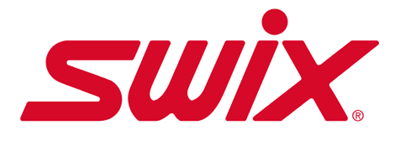How to choose the right ski poles
Swix has ski poles for all levels: from beginner to world champion. Here you will find a guide to help you choose the right ones.
There are several important factors that come into play when you go out to buy ski poles. Most importantly, be honest with yourself about what's important to you and what use you envision.
- Are you going to use them for quiet skiing?
- Are you going to go off the beaten trails?
- Or should you have the easiest possible poles for competition?
What type of rod tube should you have?
Let us first familiarise you with the different types of pipes available. The pipe is a ski pole stripped of pulley and handles.
Composite: The lightest rods are made of 100% carbon fibre. These poles are known to be particularly light and stiff, but do not withstand knocks and knocks as well as more solid poles.
The Swix Triac 4.0 Aero is an example of a carbon fibre ski pole. This pole is used by Frida Karlsson, Hans Christer Holund and several of the world's best skiers.
Swix has several types of composite rods that vary in price and characteristics. The biggest difference between these rods is the proportion of carbon in the rod tube.
Aluminum: Aluminium hiking poles weigh more than carbon fibre ski poles. It affects the pendulum, but makes the ski poles more robust to withstand knocks, falls and rough use better.
Aluminum poles are best suited for beginners and hikers who like the quiet skiing trips.

The SWIX Triac 4.0 Aero is an example of a ski pole made of 100% carbon fiber. This ski pole is used in competitions by some of the world's best skiers.
Handles and straps on ski poles
Swix has several fastening mechanics for straps. These are located on the handle, at the top of the ski pole. Let's look at the straps first:
The TCS system: TCS is most commonly used on carbon composite poles. The TCS system makes it easy for you to change the strap, and allows, among other things, the use of the new Quick release, which allows you to easily click on and off the straps during the ski trip – without having to remove the straps.
The Swix Triac 4.0 Aero and Quantum Q1 are examples of ski poles that come with the TCS system. Note: These poles come without a strap when you buy them from Swixsport.com.
Pro fit 3D strap: The strap is distinguished by the strap that sticks out in a loop at the top of the handle. This fastening system has been on the market longer than TCS, and it is for many a matter of taste what they prefer.
Today, only typical hiking poles come with Pro fit 3D. These poles come with a strap.
Handle: It is common to have handles made of cork, which provide better comfort and grip when skiing in all kinds of weather.
Some junior and beginner poles come with handles made of rubber. These have somewhat better wear resistance, but comfort is better with cork.
Pulleys
Also on castors there are several systems that you must adhere to, but in short we can distinguish between pulleys that can easily be unscrewed by the rod and pulleys that are glued to the rod.
TBS: This is a pulley system that allows you to change the pulley quickly and easily. With TBS, you can, for example, switch to a larger pulley for fresh snow, and back to a smaller pulley if you are going on groomed trails.
It only takes a few seconds to change the castor and you don't need any tools or glue. TBS pulley system is common on top models and competition poles.
Glued pulleys: Several hiking poles are delivered with glued pulleys. These are "universal" castors that can be used whether it is loose or fixed in the groove. To change the pulley you need glue.
- See also our guide to cross-country skiing suits

